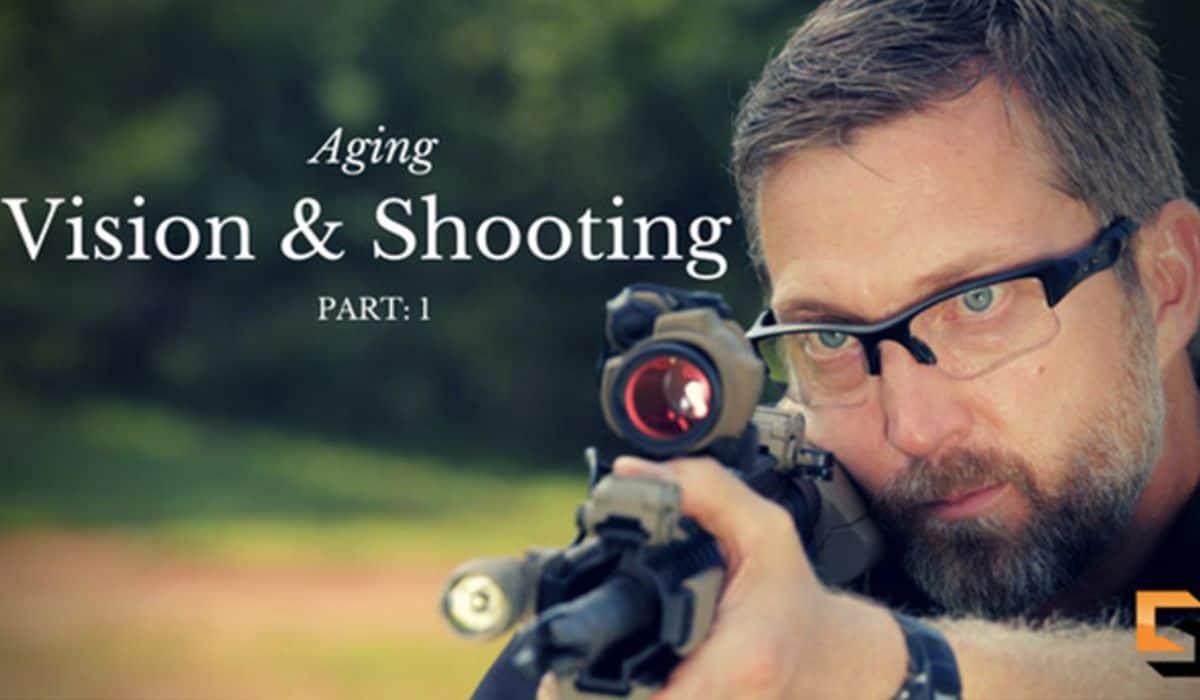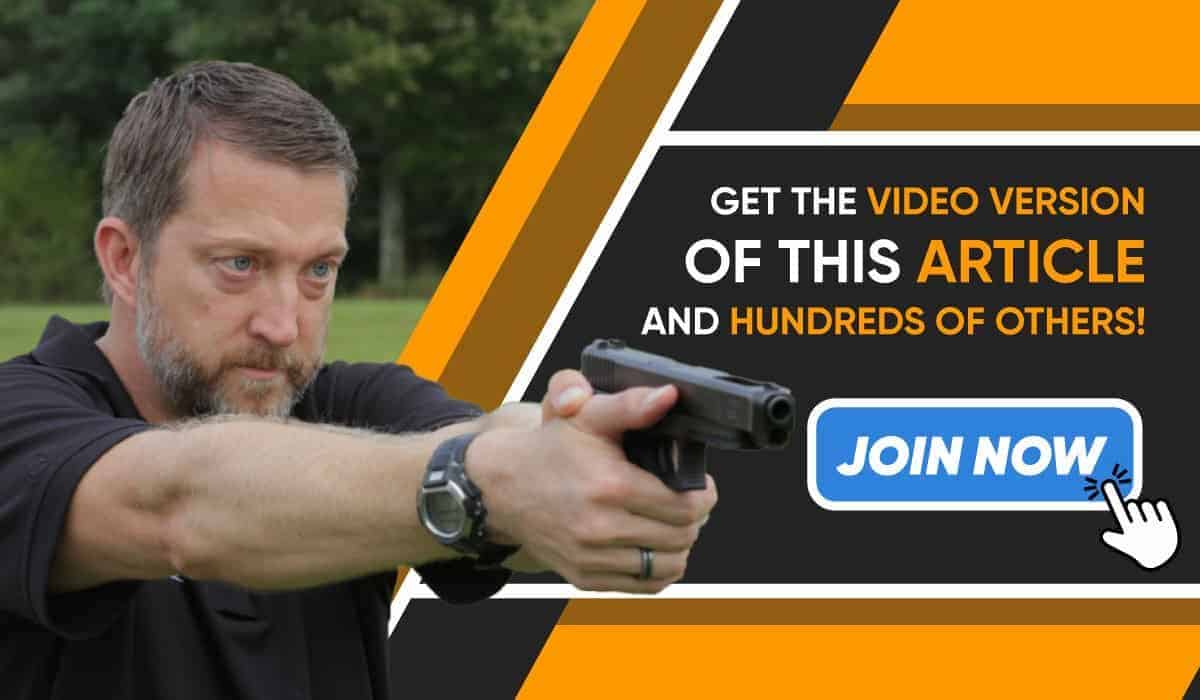Vision and Shooting…and Aging (Part 1)
When I first heard of Chris Sajnog and saw his video about vision and shooting in which he showed a Brock String, I knew I had to get involved. Although I’m a relatively new shooter (only about three years and limited mostly to target air rifles indoors), I’ve been a practicing optometrist for about thirty-four years and have worked in the area of Sports Vision Training (a.k.a. “Performance” Vision Training) for the past seven years.
In a short time as a member of Chris Sajnog’s Center Mass Group, I learned that most of the questions shooters have about their vision relate to the changes that come with age (or as I like to call it, “the passing of time”). I will go over some of the issues that have shown up in the Team Room discussions as well as some of the things I’ve noticed in my own attempts to put little pellets repeatedly through the same hole in paper targets. (Which can be more difficult than meets the eye, pardon the pun!)
The first part of this series will address the optical considerations that we have to deal with as we hit middle age and beyond, and the second part will cover the changes that the eye undergoes with age.
Refractive Errors
If you wear glasses, it’s because you have an error in how your eye focuses light, i.e. when your eye is relaxed, the focus does not fall on the retina. The most common refractive errors are:
- Farsightedness (hyperopia) – the focus falls behind the retina. Not as simple to explain as myopia for the following reason: we can change the focus of the eye, a bit like focusing a camera (this is called accommodation). It is possible, with smaller amounts of hyperopia, to see clearly at all distances if you have enough accommodation to counter the hyperopia. (Accommodation changes with age, as we will soon see.) But if you have a higher amount, and can’t overcome it by focusing, then things will be blurry at near, or even at all distances.
- Nearsightedness (myopia) – the focus falls in front of the retina. Objects are clear up to a certain distance but are blurred beyond that distance. The more myopia you have, the shorter that distance is. Myopia is corrected with “minus” lenses, which make things look smaller.
- Astigmatism – this occurs when one or more of the optical elements of the eye, either the front surface of the cornea or the internal lens, have a distorted shape, “out of round.” It can be corrected with glasses or contact lenses, which use lenses that have equal but opposite “out-of-roundness.”
- Combinations – many people have combinations of astigmatism with either myopia or hyperopia.
- Presbyopia – this is the loss of focusing ability that occurs with age, and it begins to affect our reading typically sometime in the mid-forties. Some people call this farsightedness, but it really isn’t, and it can occur with any of the above conditions. Presbyopia keeps us from being able to focus our front sights. Or our dinner. Or our cell phones:

“If only my arms were just a bit longer…” -Cartoon by Vinny Giovannucci
“I can see the target fine, but I can’t get my front sight clear. What can I do?”
If you are presbyopic, we have to correct your vision for your front sight. The ways we correct for presbyopia are:

- Reading glasses – these correct for the reading distance and have a single optical power
- Bifocals – glasses with two different prescriptions; if you need a correction for distance, that is placed at the top, and the reading correction is at the bottom, with a distinct line separating them
- Trifocal lenses – three distinct zones, separated by lines, give distance, near, and intermediate vision (intermediate zone would give a clear front sight)
- Progressive lenses – these have the distance Rx at the top, with a gradual change of power from the top to the bottom of the lens. These are the most commonly used multifocal today.
- Contact lenses – there are many types of multifocal contact lenses — soft, rigid, and hybrid (soft lenses with a rigid optic in the center, for sharper, clearer vision and the enhanced comfort of a soft lens.)
In this vision and shooting, one of the challenges for shooters wearing progressive lenses is that focusing a front sight requires tilting the head back to access the part of the lens that corrects for that distance. But this can be awkward and uncomfortable at best, and it can adversely affect your stance when shooting at worst. Also, there are inherent distortions in the design of progressives that you can encounter. The zone that will focus on a front sight is fairly small compared to the width of the reading zone.
My own experience was that even the distance area of my progressive lenses showed distortion of a peep/globe sight when I was holding a rifle since I was looking through the upper corner of the lens. This brings into play another important concept: the best part of a lens is the area around the optical center, and as we move away from the optical center, the image can become less clear, even distorted. The higher the prescription, the greater the distortion and non-prescription safety glasses probably won’t show this distortion. (Also, I’ve exaggerated a bit in the illustration.) Furthermore, this distortion can occur even in non-progressive lenses!
So what do we do about the distortion that can occur when looking through off-center areas of our prescription glasses? Well, there are a few things available:
- Have a pair of glasses made with the optical centers moved (“decentered”) to where your eyes look through the frame when you’re shooting your rifle. The picture below (shown for a right-eyed shooter) gives you an idea. The optical centers will still be the same distance apart as your eyes, but when you see your rifle, you will be looking through the optical centers (or at least a lot closer than if they were put in the usual spot.)
- Ask for “digital free-form” surfaced lenses, which have special curvatures that correct for the distortion in the periphery. (Hint: they’re not cheap.)
- Switch to contact lenses, which remain centered on the eye, even as the eye moves.
“So there are ways to handle the distortion from looking through the periphery of my glasses, but I shoot with iron sights, and my front sight is still blurred.”
Now we’re getting to one of the most FAQs I encounter from shooters — how to get the front sight in focus. Generally, the front sight of a rifle or pistol will be farther away than the distance at which “reading glasses” is correct, so not only will the front sight be blurred, but the target will be terribly blurred. If you’re wearing progressive lenses, you will have to tilt your head back uncomfortably to get the sight in focus.
At this juncture, I’d like to use a favorite analogy of mine. Think of all the different types of shoes you have and how each one has its own purpose; yet, we sometimes expect a single pair of glasses to do everything. If you shoot with open sights, and you’re presbyopic (buzzword for “over forty-five or so”) then you need help to get the front sight focused, and there are ways to do that:
- Press-on pinholes will allow you to see the front and back sights, and your target clearly. Those of us who are nearsighted are familiar with the tendency to squint to see clearly far away without our glasses or when our prescriptions are no longer strong enough. Pinholes will clear up the image, but with a drawback — they don’t work too well unless the light is fairly bright. Also, if you’re developing a cataract that is located toward the center of your lens (more on that very soon), the pinhole might actually make things worse by blocking the light that would go through the periphery of your lens.
- Multifocal contact lenses: unlike eyeglass lenses, contact lens multifocal use a concentric design — the distance vision is in the center, and the power changes to near as you go away from the center (or vice versa, depending on the manufacturer and design). So, as you look through the lens, you are always seeing “clearly” at all distances since the lens moves with your eye and is always in the center. There is a trade-off, however, since you are always looking through distance and near parts of the lens, everything is simultaneously in and out of focus. Some people never get used to this, and complain of “ghost” images from the parts of the lens that are focusing at distances other than the object they want to see clearly.
- Now, for something you might never have heard before — a pair of glasses with the distance Rx in your non-dominant (non-shooting) eye, and the “Minimum Plus” to get your front sight clear (in most cases, this will be about +0.75 over your distance Rx). If you have a good person fitting your glasses, you can even ask that the lenses be centered on your eyes while your head is in the position you use when shooting. (And if you aren’t sure which eye is your dominant eye, check out Chris’ website, or better yet, pick up a copy of his book!)

To figure out the correction for your front sight, have someone measure the distance from the bridge of your nose to the front sight. Then tell your eye care provider you need a prescription that has just enough “plus power” to get that distance in focus. If your eye doctor is pretty cool about things like shooting, you could ask about the method shown in the picture below. Here, a competitive air pistol shooter is holding his pistol while I dial in just enough correction to get the front sight focused. It worked well! Also, remember to have the optical centers placed in front of your eyes when you are lined up with the sights on your rifle.
The image below will give you some idea of how the glasses work. With a lens focused on the front sight distance, the target is extremely blurred, but with just enough correction to enable you to see the front sight clearly, the target is not so blurred. Of course, in a perfect world, everything would always be focused.
Alright, so that is it for this vision and shooting. I hope this overview of the optical problems encountered by those of us of the “bifocal age” has helped you to understand some of the concepts and potential solutions regarding those problems. In the next installment, I’ll go over some of the changes the eye undergoes with age and what can be done about them. In the meantime, shoot safely, and always remember your eye protection!
Robert Buonfiglio (Chris Sajnog's Team Room handle “Eyedoc”) is an optometrist in the Boston area who has practiced for over thirty-four years and for the past seven years has had a Sports Vision Training practice, which seeks to train the visual skills of competitors (many sports, including shooting) with the express goal of improving performance. For more on his Sports Vision Training practice, check out his Facebook page at Eye on Performance.



